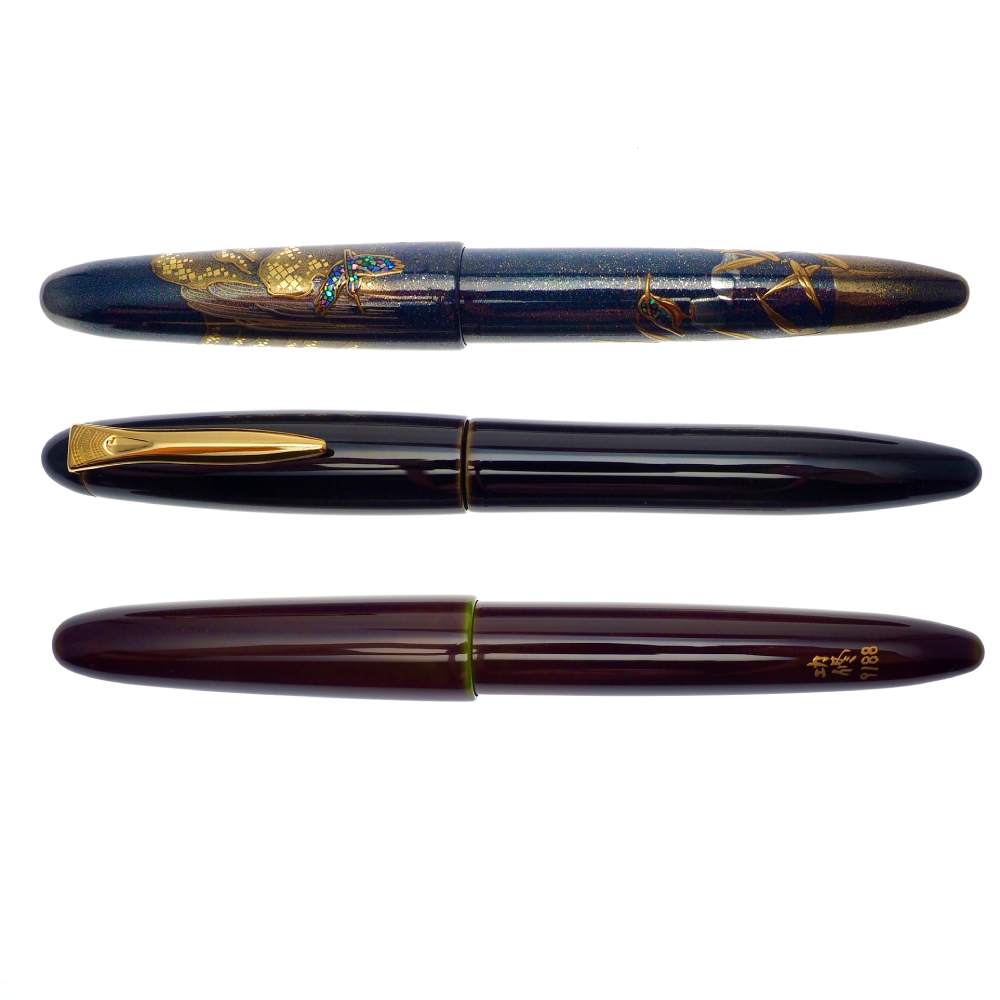Urushi, a lacquer that we also know under the term Chinese lacquer. The raw material is obtained from the resin of the East Asian lacquer tree. The lacquer is cloudy at first, but clear and amber after curing.

The finished urushi varnish is resistant to water or solvents. It is very elastic and food safe. Therefore, in every Japanese kitchen you will find bowls or spoons sealed with urushi lacquer.
The paint is traditionally colored red or black with iron oxide or carbon black. Nowadays, however, there are various other color variants.

Urushi has to be applied very laboriously: each layer has to harden carefully at high humidity and 30 degrees. This sometimes takes up to 10 days before the next layer can be applied.
Urushi becomes particularly valuable through various refinements. Such as processing gold or silver dust (maki-e), mother-of-pearl inlays (raden) or eggshells (rankaku). The Tamenuri technique is also very popular with fountain pens: an opaque urushi varnish is first applied and then another layer of dark, transparent varnish is applied. This layer becomes lighter and more transparent over time, so that more and more of the original paint is visible.




